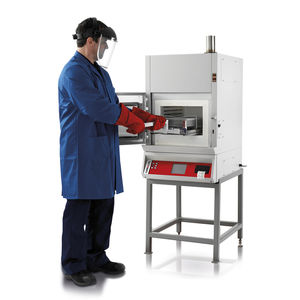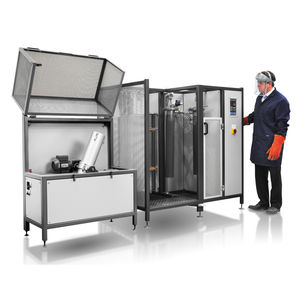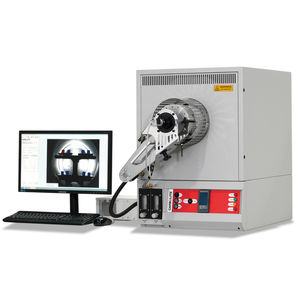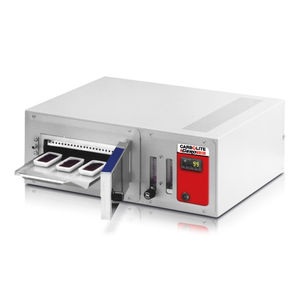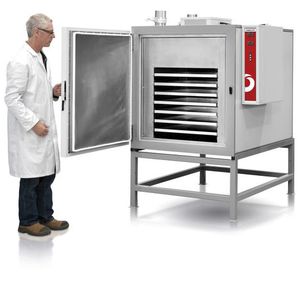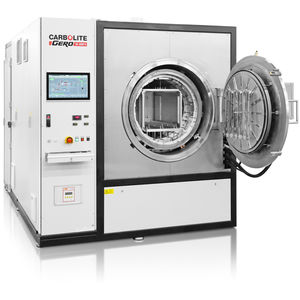
Coke reactivity test furnace CRF/1chamberCO2automatic

Add to favorites
Compare this product
Characteristics
- Function
- coke reactivity test
- Configuration
- chamber
- Atmosphere
- CO2
- Other characteristics
- automatic
- Maximum temperature
1,000 °C
(1,832 °F)- Width
600 mm
(23.62 in)- Height
520 mm
(20.47 in)- Depth
400 mm
(15.75 in)
Description
The CRF/1 CO2 reactivity test furnace complies with the Standard test method for the determination, by a loss in mass method, of the reactivity to carbon dioxide of calcined petroleum coke used in the manufacture of anodes for the production of aluminium.
The furnace conforms to the following Standards:
ISO 12981-1 Carbonaceous materials used in the production of aluminium -- Calcined coke -- Determination of the reactivity to carbon dioxide -- Part 1: Loss in mass method
BS 6043-2.20.1 Determination of the reactivity by a loss in mass method
The reactivity of a calcined coke to carbon dioxide is assessed by determining the loss in mass of a sample exposed in accordance with the following chemical reaction: C + CO2 -> 2 CO. This determination allows an assessment of the later anode reactivity to carbon dioxide in the electrolysis cell.
Once the CRF/1 reaches the maximum operating temperature of 1000 °C an audible alarm is sounded to indicate when the sample can be loaded. The coke sample of 5 g, having a grain size of 1 mm to 1.4 mm, can then be placed into the quartz tube. An automatic mass flow meter then opens the CO2 gas flow for approximately 100 minutes exposing the sample to a carbon dioxide stream of 50 l/h. The loss in mass is then measured.
Catalogs
Exhibitions
Meet this supplier at the following exhibition(s):

Related Searches
- Furnace
- Chamber furnace
- Electric furnace
- Heat treatment furnace
- Drying furnace
- Laboratory furnace
- Combustion furnace
- Gas furnace
- Stainless steel furnace
- Baking oven
- Controlled atmosphere furnace
- High-temperature furnace
- Industrial furnace
- Vacuum furnace
- Automatic furnace
- Digital furnace
- Continuous furnace
- Forced convection furnace
- Annealing furnace
- Air circulating furnace
*Prices are pre-tax. They exclude delivery charges and customs duties and do not include additional charges for installation or activation options. Prices are indicative only and may vary by country, with changes to the cost of raw materials and exchange rates.




